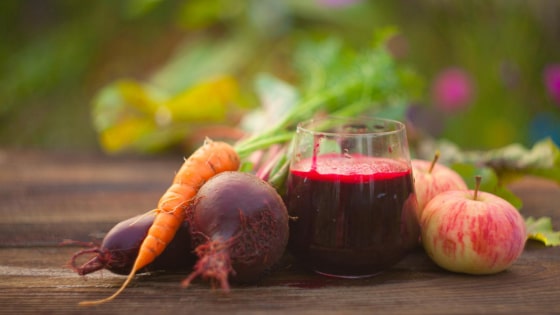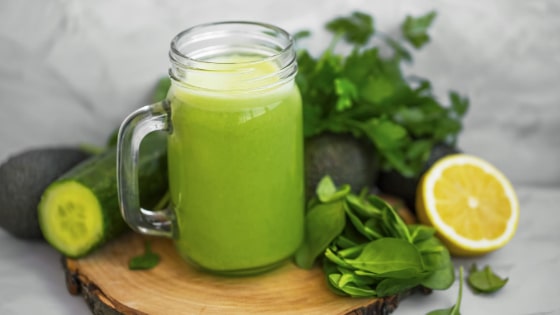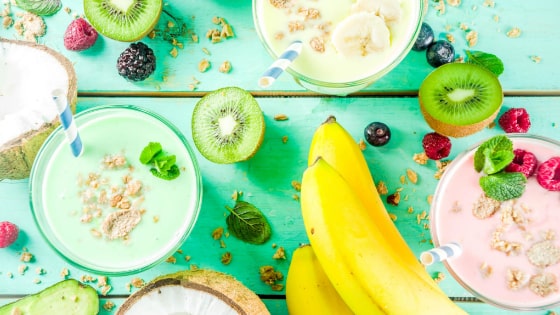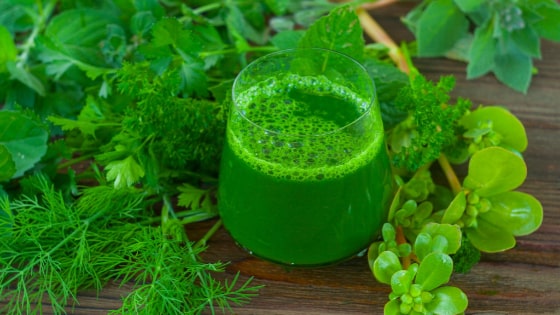Juicing for diabetes can be a great way to maintain blood sugar levels and get some essential nutrients and vitamins into your system.
Juicing is a great way to pack in a ton of fruits and vegetables into one drink, and it’s especially good for those who have diabetes.
By juicing you can make sure you’re getting all the nutrients you need without having to eat a lot of food.
According to a report by American Diabetes Association, juicing can help prevent some of the complications associated with diabetes such as heart disease and stroke.
However, before you start juicing for diabetes, there are a few things you need to keep in mind. First of all, juicing should not be used as a replacement for meals.
You still need to eat healthy foods and get the proper amount of calories each day. Juicing should be used in addition to meals, not in place of them.
Let’s get started!
What Juicing Is And How It Can Help People With Diabetes
Juicing is a process of extracting juice from fruits or vegetables. This juice can be consumed on its own, or added to other beverages to provide additional nutrients.
Juicing has many benefits, including weight loss, improved digestion, and increased energy levels.
For people with diabetes, juicing can be especially beneficial. The nutrients in fresh fruits and vegetables can help to regulate blood sugar levels, and the fiber content can help to slow the absorption of sugar into the bloodstream.
This can help to prevent spikes in blood sugar levels, which can be dangerous for people with diabetes. Juicing can also provide essential vitamins and minerals that are necessary for good health.
The Benefits Of Juicing For Diabetes
When juicing for diabetes, it is important to include vegetables and fruits that are high in fiber and low in sugar. Some good choices include broccoli, spinach, kale, apples, and grapefruit.
Fiber helps to regulate blood sugar levels, while sugar can cause spikes in blood sugar. By including these types of foods in your juice, you can help to keep your blood sugar levels more stable.
In addition to fiber and low-sugar fruits, it is also important to include foods that are high in antioxidants. These nutrients can help to protect your body against damage from free radicals.
Free radicals are unstable molecules that can damage cells and lead to inflammation. Some good sources of antioxidants include carrots, tomatoes, and dark leafy greens.
Juicing can help diabetics absorb more nutrients from their food and improve their blood sugar control. Including a juicing routine as part of a healthy lifestyle can help prevent diabetes complications and improve overall health.
How To Make Juices That Are Healthy And Delicious

There are many juicing recipes that are healthful and delicious. Some of the most nutritious juices include dark leafy greens, such as kale, Swiss chard, and spinach.
These greens are packed with vitamins, minerals, and antioxidants. Other good juicing choices include berries, citrus fruits, and apples.
When juicing, it is important to use fresh, organic fruits and vegetables. If you cannot find organic produce, be sure to wash your produce thoroughly.
Also, it is best to avoid juicing fruits and vegetables that have been treated with pesticides.
When juicing for diabetes, it is important to include a variety of different fruits and vegetables in your juicing recipes.
This will help you get the most nutrients possible. juicing is a great way to get the recommended daily fruits and vegetables.
Some delicious juicing recipes for diabetes include:
-Kale, Spinach, and Apple Juice
-Strawberry, Blueberry, and Banana Smoothie
-Cucumber, Celery, and Lemon Juice
-Carrot, Beet, and Ginger Juice
Tips For Sticking To A Juicing Diet
Juicing for diabetes can seem like a daunting task, but with a little planning and preparation, it can be an easy and enjoyable way to improve your health.
Here are a few tips for sticking to a juicing diet:
- Make a plan. juicing for diabetes can be a great way to manage your blood sugar levels, but it’s important to have a plan in place. Talk to your doctor or registered dietitian to create a juicing plan that’s right for you.
- Get organized. Once you have your juicing plan, take some time to get organized. Stock your kitchen with the fruits and vegetables you’ll need for your recipes, and invest in a good juicer.
- Be prepared. Juicing takes time, so it’s important to be prepared. If you’re short on time in the morning, try juicing the night before and storing your juice in the fridge.
- Make it a habit. Like any new diet or lifestyle change, juicing for diabetes takes time to get used to. But the more you do it, the easier it will become. Try juicing every day for a week, and then gradually increase the frequency as you get more comfortable with it.
- Have fun with it. Juicing can be a great way to experiment with new flavors and ingredients. Don’t be afraid to try new combinations of fruits and vegetables. You may be surprised at what you like!
- Drink plenty of water. Drinking plenty of water will help to flush out toxins and keep you hydrated.
- Get support from friends and family. It can be helpful to have the support of friends and family when you’re trying to stick to a juicing diet.
By following these tips, you can make juicing for diabetes a part of your healthy lifestyle.
Recipes For Diabetic-Friendly Juices
Here are my top diabetic-friendly juice recipes:
Apple, Beet, and Carrot Juice

Ingredients:
1 apple, washed and cut into quarters
1 beet, peeled and cut into quarters
3 carrots, washed and cut into thirds
Directions:
1. Juice the apple, beet, and carrots using a juicer.
2. Serve immediately or store in the fridge for an hour or two.
Cucumber, Kiwi, and Mint Juice

Ingredients:
1 cucumber, peeled and cut into quarters
3 kiwis, peeled and cut into thirds
1 handful of mint leaves
Directions:
1. Juice the cucumber, kiwis, and mint leaves using a juicer.
2. Serve immediately or store in the fridge for an hour or two.
Orange, Grapefruit, and Lemon Juice

Ingredients:
2 oranges, peeled and cut into quarters
1 grapefruit, peeled and cut into quarters
1 lemon, washed and cut into quarters
Directions:
1. Juice the oranges, grapefruit, and lemon using a juicer.
Blueberry and Banana Smoothie

Ingredients:
1 cup blueberries
1 ripe banana
1/2 cup unsweetened almond milk
1 tablespoon chia seeds
1/2 teaspoon vanilla extract
Directions:
1. Add all ingredients into a blender and blend until smooth.
Green Juice

Ingredients:
1/2 a cucumber
1 green apple
1/2 inch ginger
1 celery stalk
1/2 a lemon, peeled
1 bunch of spinach
Directions:
1. Add all ingredients into a juicer and juice until desired consistency is reached.
What To Look For In A Juicer
When shopping for a juicer, there are a few key factors. The most important is finding a juicer that is easy to operate and clean. It’s also important to find one that is durable and will last a long time.
Another important factor to consider is the price. Juicers can range in price from around $60 to $300. It’s important to find one that fits your budget and juicing needs.
Finally, it’s also important to find a juicer that has a good warranty. This will ensure that you’re covered in case anything goes wrong with the juicer.
The Possible Risks Of Juicing For Diabetes
There are a few risks associated with juicing for diabetes. For one, because you’re removing the fiber from fruits and vegetables, you’re also removing the bulk that would usually fill you up. This could lead to overeating, and potentially weight gain.
Additionally, juicing can cause your blood sugar to spike quickly, so it’s important to monitor your levels closely if you’re juicing for diabetes.
Finally, certain fruits and vegetables (like carrots and beets) can contain high levels of natural sugars, which could further aggravate blood sugar levels.
As always, speaking with your doctor before starting any new juicing regimen is best.
Conclusion
If you’re considering adding juicing to your diabetes management routine, there are a few things you need to know. First and foremost, it’s important to consult with your doctor before starting any new health regimen, including juicing.
Juicing removes the pulp from fruits and vegetables, which could lead to overeating and weight gain if not monitored closely.
Additionally, juicing can cause your blood sugar to spike quickly, so it’s important to monitor your levels and speak with your doctor about any concerns.
Finally, certain fruits and vegetables (like carrots and beets) can contain high levels of natural sugars, which could further aggravate blood sugar levels.
Cheers to your health!
FAQ
1. Can juicing help control diabetes?
Juicing can certainly help control diabetes by providing the body with nutrients that it may be lacking.
Additionally, juicing can help to regulate blood sugar levels and provide the body with antioxidants and phytochemicals that can help to prevent or delay the onset of diabetes.
2. What are the best fruits and vegetables for juicing and diabetes?
Some of the best fruits and vegetables for juicing and diabetes include apples, oranges, grapefruits, lemons, cucumbers, celery, spinach and bananas.
3. What kind of juice is good for diabetics?
There are a few different types of juicing that can be beneficial for diabetics.
These include green juices, which are packed with nutrients and antioxidants, and fruit and vegetable juices, which can help to regulate blood sugar levels.
4. What fruits to avoid if you are diabetic?
If you are diabetic, it’s best to avoid fruits that are high in natural sugars, such as dates, grapes and mangoes. These fruits can cause your blood sugar to spike quickly.
5. Is cucumber juice good for diabetes?
Cucumber juice is a good choice for diabetics as it is a low-glycemic food and contains antioxidants and phytochemicals that can help to regulate blood sugar levels.
